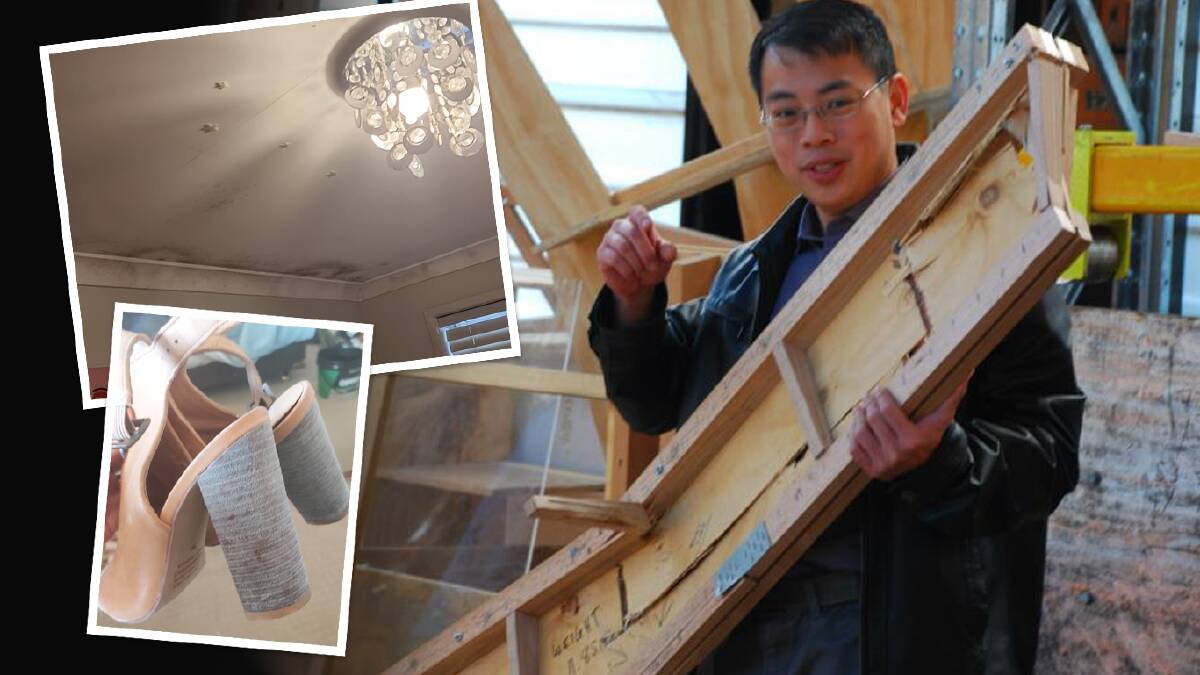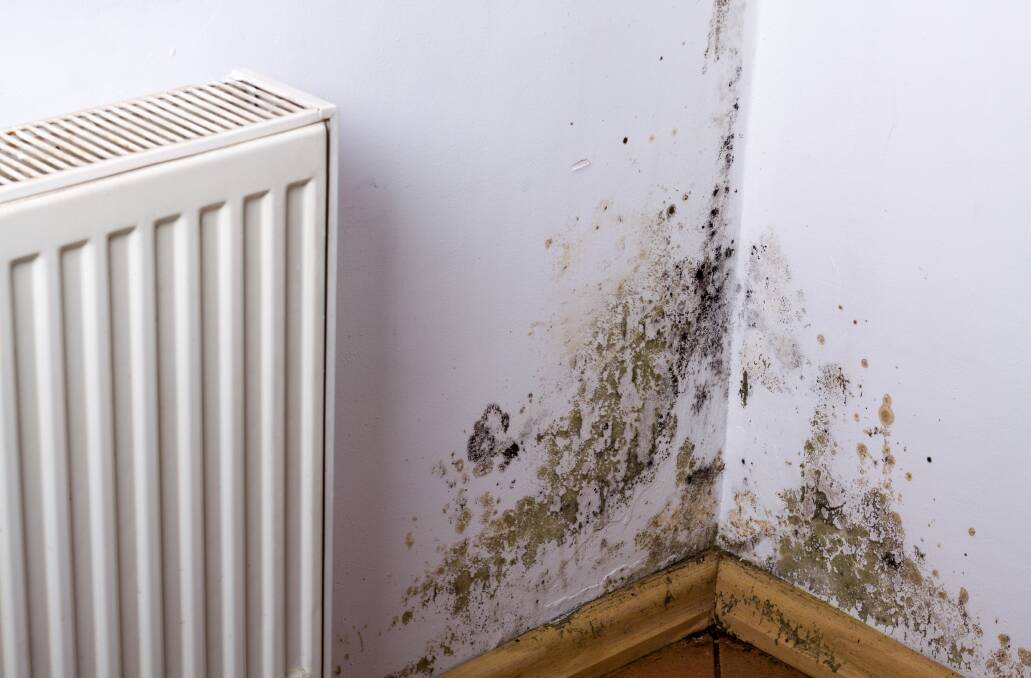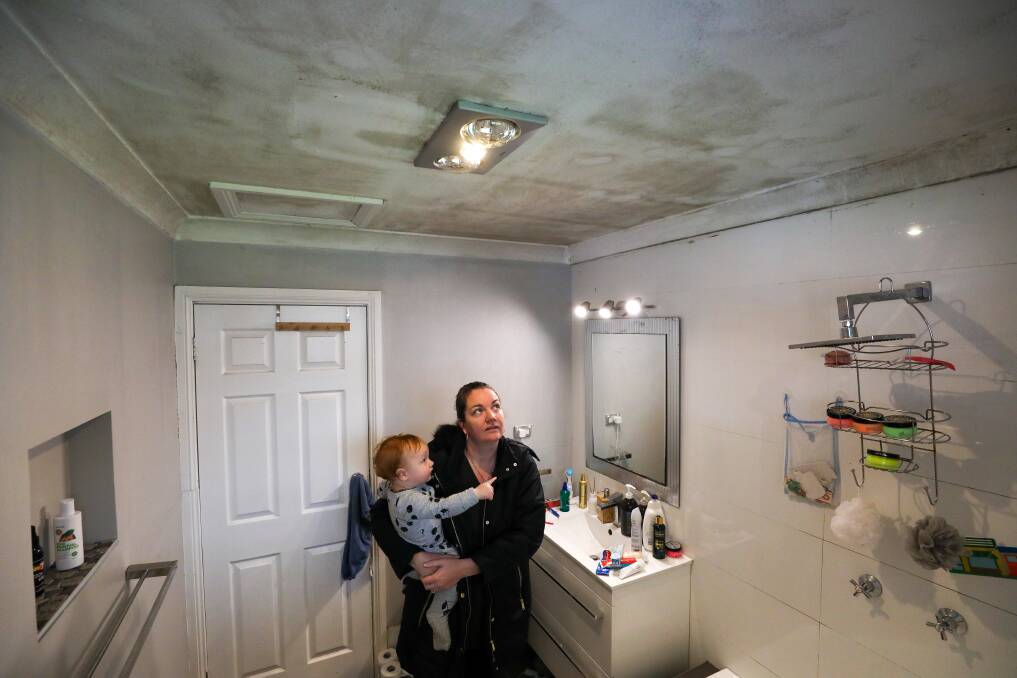
Tenants and landlords across the Illawarra are butting heads over a contentious issue that is leaving adults, children and babies with a range of serious health issues, some permanently scarred.
Subscribe now for unlimited access.
or signup to continue reading
Remediation of black mould is one of the top concerns brought to the Tenant Service at the Illawarra Legal Centre, with the majority of complainants told it's their fault by their landlord.
In Australia there are no clear guidelines on remediation or building codes that give a measure of what constitutes adequate ventilation in a home to stop mould, but experts say simply painting over it won't solve the problem and it shouldn't be put back on tenants for not leaving windows open in the middle of winter.
"Black mould can be quite dangerous," said Phoenix Van Dyke, Team Leader Illawarra South Coast Tenants Service.
"At the moment, I've got somebody that their shower leaks and has caused mould in the adjoining room of the children's bedroom, on the carpet and along the walls ... and was not able to sleep in there."
It's the most common concern in regards to repairs ... we get daily calls.
- Phoenix Van Dyke, Illawarra Legal Centre
That tenant is fighting for the problem to be fixed for the sake of her family's health, like many other people Ms Van Dyke assists.
She noted another client who spent this entire winter with his back door open and no heating because he was told his carotene heater was the cause.
The legal expert mainly deals with public housing tenants where the problem is rife, but these anecdotes are similar to around a dozen tenants the Mercury spoke with.
Stories of babies being rushed to the emergency wards for not being able to breath; tenants breaking out in severe rashes, coughing, extreme fatigue and depression; opening wardrobes or cupboards to discover everything inside had turned green.
"Living in a mouldy environment can cause or contribute to health or quality of life issues and as a result is an area that NSW Fair Trading takes seriously for both renters and new homeowners," a spokeswoman for Fair Trading said.
"In some cases, the presence of mould can be difficult to prove if it is the tenant or landlord responsible for mould. Some criteria used to determine the cause or spread of mould include external moisture penetration through faulty work, poor ventilation and/or existing untreated mould.
"Tenants also need to be aware that the mould issue can be created or exacerbated by lack of ventilation."
Architectural scientist and university academic Tim Law has been studying the effects of mould in buildings for years and has been spurred on by his sense of "injustice".
Radiant heaters, dehumidifiers and temperature gauges which also monitor humidity levels will help combat the problem he said, but he also believes building codes need to change.
"We don't have a standard around remediation of buildings and we don't have industry best practices that are published here," Dr Law said.
"The American Standards have guidelines around this ... which set out you have to remove the moisture and then remove the mould source. Trying to kill it or encapsulate the mould by painting over it does not work.
"The problem in Australia, we don't have the legal framework to insist on the right kind of industry practice.
"This came up about in 2018 during the Parliamentary Inquiry into Biotoxin Illnesses ... enquiry .. something needs to be done so one of the recommendations was that we would need a standard around remediation of mould in buildings."

Tim McKibbon, CEO of the Real Estate Institute of NSW, said best practice among real estate property managers should be to attend to issues promptly and if there was a "clear and present danger" then the problem needs to be remedied immediately.
A spokesman from the NSW Land and Housing Corporation who look after social housing said they receive thousands of calls to their maintenance help-line each day and "expected response timeframes for maintenance issues are based on the nature and urgency of the issue".
"Mould can be the result of condensation, ventilation issues, hoarding, water leaks or rising damp," the spokesman said.
"If the source of the mould appears to be rising damp or a water leak, then the tenant should make a maintenance request to the maintenance hotline. The source of the water leak would be inspected and an assessment of works to be completed and timeframes would be provided to the tenant. Where the growth of mould cannot be attributed to water leaks or rising damp, tenants are responsible for its removal."
He said it was extremely rare for a tenant to be permanently moved due to mould.
Of the tenants the Mercury spoke with, half were currently battling with their real estate property managers to get a response to remediation of mould while others had resorted to taking their landlords to the NSW Civil and Administrative Tribunal (NCAT) to break their leases - some successful, others not.
Ms Van Dyk said tenants need to put their concerns in writing and inform their real estate property manager or landlord so it can be used as proof if the problem needs to be escalated to NCAT.
She said in some circumstances tenants could be eligible for compensation if a landlord was found to be in breach of their lease and not respond to repairs in a timely manner, subsequently making a mould problem worse which is a health hazard.
"Where the shower was leaking into children's bedroom and the children not able to sleep in that room ....you are no longer getting the service you signed up for so you could ask for a rent reduction because of the withdrawal of service," Ms Van Dyk said.
"If it goes on for a long time and takes its toll on you, you can also ask for compensation for distress, loss of enjoyment and inconvenience."
We depend on subscription revenue to support our journalism. If you are able, please subscribe here. If you are already a subscriber, thank you for your support.



